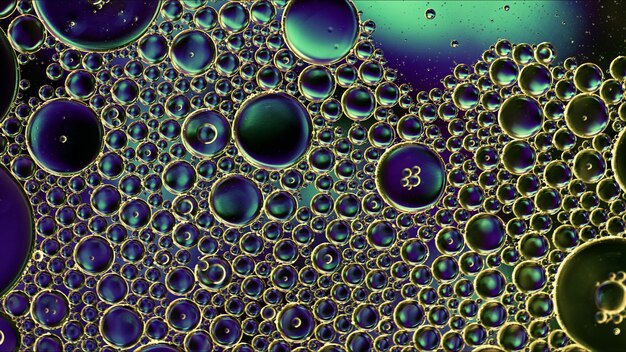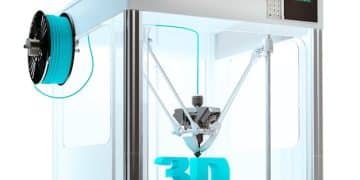Nanotechnology in the US: Applications, Ethics, and Future Impact

Nanotechnology in the US spans diverse applications from medicine to manufacturing, raising significant ethical questions regarding safety, environmental impact, and societal equity in access and regulation.
Unveiling the transformative world of nanotechnology: Applications and Ethical Considerations in the US, this article delves into its vast potential while addressing the critical ethical dilemmas it presents.
Nanotechnology: Revolutionizing Industries in the US
Nanotechnology is rapidly transforming various sectors within the United States. Its ability to manipulate matter at the atomic and molecular level is opening doors to innovations previously confined to science fiction. From enhanced medical treatments to stronger and lighter materials, nanotechnology’s potential seems boundless.
The Promise of Nanomaterials
Nanomaterials, engineered structures with dimensions in the nanometer scale, exhibit unique properties that differ significantly from their bulk counterparts. These properties, such as increased strength, enhanced conductivity, and improved reactivity, make them invaluable in diverse applications.
- Enhanced Durability: Nanomaterials are used to create coatings that enhance the durability and scratch resistance of various products.
- Improved Conductivity: Nanomaterials significantly improve the conductivity in electronics and energy storage devices.
- Targeted Drug Delivery: This technology facilitates targeted drug delivery in medical treatments, minimizing side effects.
However, the widespread use of nanomaterials also raises concerns about their potential impact on human health and the environment. Ensuring responsible development and usage is paramount.

The convergence of nanotechnology with other fields such as biotechnology and information technology promises groundbreaking advancements that could reshape society.
Medical Applications of Nanotechnology in the US
Nanotechnology is significantly impacting medical treatments within the United States. Its precision and ability to target specific cells make it indispensable in developing more effective therapies with fewer side effects. This technology offers hope for battling resistant diseases and improving diagnostic accuracy.
New Diagnostic Tools
Nanotechnology enables the development of highly sensitive diagnostic tools that can detect diseases at their earliest stages. These tools, based on nanoparticles, can identify biomarkers with unprecedented accuracy, leading to earlier treatment and improved patient outcomes.
Nanoparticles are engineered to bind specifically to disease-related molecules, allowing for earlier and more precise detection than traditional methods.
Targeted Drug Delivery
Targeted drug delivery systems utilize nanoparticles to deliver therapeutic agents directly to diseased cells. This approach minimizes exposure to healthy tissues, reducing side effects and maximizing therapeutic efficacy. Cancer treatments are a prime example of this application.
- Reduced Side Effects: By targeting only the diseased cells, side effects are minimized.
- Increased Efficacy: Delivering medication directly to the affected area increases the effectiveness of the treatment.
- Personalized Medicine: Nanotechnology facilitates personalized medicine, tailoring treatments to the specific characteristics of each patient.
Despite the potential benefits, there are regulatory and safety hurdles to overcome. The long-term effects of nanoparticles on the human body are still under investigation, requiring rigorous testing and monitoring.
Nanotechnology in Manufacturing and Materials Science
Nanotechnology has revolutionized manufacturing and materials science in the United States. Engineering materials at the nanoscale has led to stronger, lighter, and more efficient products across various industries. From aerospace to consumer goods, nanomaterials are enhancing product performance and sustainability.

Enhanced Materials
Nanotechnology is used to create materials with enhanced properties such as increased strength, flexibility, and resistance to wear. These materials are essential in applications ranging from construction to automotive engineering.
Advanced Manufacturing Processes
Nanotechnology enables more precise and efficient manufacturing processes. Nanoscale 3D printing, for instance, allows the creation of complex structures with unparalleled accuracy.
- Aerospace Applications: Lightweight and high-strength nanomaterials reduce fuel consumption and improve aircraft performance.
- Automotive Industry: Nanocomposites are used to create lighter and more durable car parts, enhancing vehicle efficiency and safety.
- Sustainable Construction: Nanotechnology-enhanced concrete increases the durability and lifespan of buildings, reducing the environmental impact.
As with other areas, environmental and safety concerns remain a key focus. Sustainable manufacturing practices and rigorous safety assessments are vital to ensure that the benefits of nanotechnology do not come at the expense of public health or the environment.
Ethical Implications of Nanotechnology in the US
The rapid advancement of nanotechnology raises important ethical questions in the United States. As nanotechnologies become more integrated into our lives, it is crucial to address potential privacy concerns, equity issues, and the environmental impacts associated with their use.
Privacy and Surveillance
Nanotechnology has the potential to enhance surveillance capabilities, leading to privacy concerns. Nanoscale sensors could be used to monitor individuals without their knowledge, raising questions about civil liberties and the right to privacy.
Equity and Access
Ensuring equitable access to the benefits of nanotechnology is a significant ethical challenge. The high costs associated with nanotechnology research and development could lead to unequal access to potentially life-saving treatments and other advancements.
It is essential to implement policies that promote fair distribution of nanoscale technologies, preventing the creation of a technological divide.
Addressing these concerns requires coordinated efforts from policymakers, researchers, and the public to ensure that nanotechnology benefits all members of society.
Environmental Impact of Nanotechnology
The environmental implications of nanotechnology in the US are complex and require careful consideration. While nanotechnology offers potential solutions for environmental challenges, it also poses risks to ecosystems and human health. Assessing and mitigating these risks is essential for sustainable development.
Potential Contamination
The release of nanoparticles into the environment could lead to contamination of soil, water, and air. The long-term effects of nanoparticle exposure on ecosystems and human health are not yet fully understood.
Sustainable Solutions
Nanotechnology offers promising solutions for environmental remediation and pollution control. Nanomaterials can be used to remove pollutants from water, clean up contaminated sites, and improve the efficiency of renewable energy technologies.
- Water Purification: Nanomaterials are used to filter pollutants from water sources, ensuring access to clean drinking water.
- Air Pollution Control: Nanotechnology-based filters can remove harmful particles from the air, improving air quality.
- Renewable Energy: Nanotechnology enhances the efficiency of solar cells and energy storage devices, promoting sustainable energy production.
Investing in research and development of environmentally friendly nanotechnologies is crucial for ensuring a sustainable future.
Regulation and Oversight of Nanotechnology in the US
The regulatory landscape for nanotechnology in the United States is evolving. As the technology matures and its applications become more widespread, regulatory bodies are working to ensure that potential risks are adequately managed without stifling innovation. Clear and effective regulations are essential for responsible development.
Existing Frameworks
Several federal agencies, including the Environmental Protection Agency (EPA) and the Food and Drug Administration (FDA), have regulatory authority over various aspects of nanotechnology.
Challenges and Gaps
There are challenges in regulating nanotechnology due to the difficulty in assessing the unique properties and potential risks of nanomaterials. Current regulatory frameworks may not be adequate to address these emerging challenges.
- Standardized Testing: Developing standardized testing methods for nanomaterials is crucial for assessing their safety and environmental impact.
- Risk Assessment: Improving risk assessment methodologies is essential for identifying and mitigating potential risks associated with nanotechnology.
- Public Engagement: Engaging the public in discussions about the risks and benefits of nanotechnology is important for building trust and ensuring informed decision-making.
Enhanced cooperation among regulatory agencies, researchers, and industry stakeholders is needed to create a regulatory framework that promotes safety and innovation.
Future Directions for Nanotechnology in the US
The future of nanotechnology in the United States holds immense potential. Continued research and development, coupled with responsible regulation and ethical considerations, will pave the way for groundbreaking advancements that benefit society. Nanotechnology is poised to transform industries, improve lives, and address some of the world’s most pressing challenges.
Further research in areas such as nanomaterial synthesis, characterization, and toxicity is essential for unlocking the full potential of nanotechnology.
Investing in infrastructure and training programs will support the growth of the nanotechnology workforce and ensure that the United States remains a leader in this field.
The interplay between technological innovation, ethical awareness, and responsible regulation will shape the future of nanotechnology in the US, ensuring it contributes positively to society and the environment.
| Key Point | Brief Description |
|---|---|
| 🔬 Medical Applications | Nanotechnology enhances drug delivery and diagnostics. |
| 🏭 Manufacturing | Nanomaterials improve product strength and efficiency. |
| 🌱 Environmental Impact | Nanotechnology offers solutions but poses contamination risks. |
| ⚖️ Ethical Implications | Privacy, equity, and regulation are key ethical concerns. |
Frequently Asked Questions
▼
Nanotechnology is the manipulation of matter on an atomic and molecular scale. Generally, nanotechnology deals with structures sized 1 to 100 nanometers in at least one dimension, and involves developing materials or devices within that size. It has diverse applications across many fields, including medicine, manufacturing, and electronics.
▼
In medicine, nanotechnology is used for targeted drug delivery, diagnostics, and regenerative medicine. Nanoparticles can deliver drugs directly to cancer cells, reducing side effects. They also improve the sensitivity of diagnostic tools by detecting biomarkers at earlier stages, leading to earlier detection and treatment.
▼
The ethical concerns include potential privacy infringements due to enhanced surveillance, equitable access to nanotechnology benefits, and environmental risks associated with the release of nanoparticles. Ensuring responsible development and regulation is crucial to address these ethical challenges and maintain public trust.
▼
The environmental impact includes potential contamination of soil, water, and air by nanoparticles. However, nanotechnology also provides potential solutions for environmental remediation, such as water purification and air pollution control. Sustainable practices are essential to mitigate risks and harness the benefits responsibly.
▼
Several federal agencies regulate nanotechnology in the US. The Environmental Protection Agency (EPA) and Food and Drug Administration (FDA) oversee different applications, ensuring that nanomaterials are safe for both human health and the environment. These agencies also work on developing standardized testing and assessment methods.
Conclusion
In conclusion, nanotechnology in the US represents a frontier of immense potential and significant ethical considerations. As its applications expand across various sectors, addressing the associated ethical, environmental, and regulatory challenges is crucial. By fostering responsible innovation and promoting equitable access, nanotechnology can contribute to a more sustainable and prosperous future for all.





